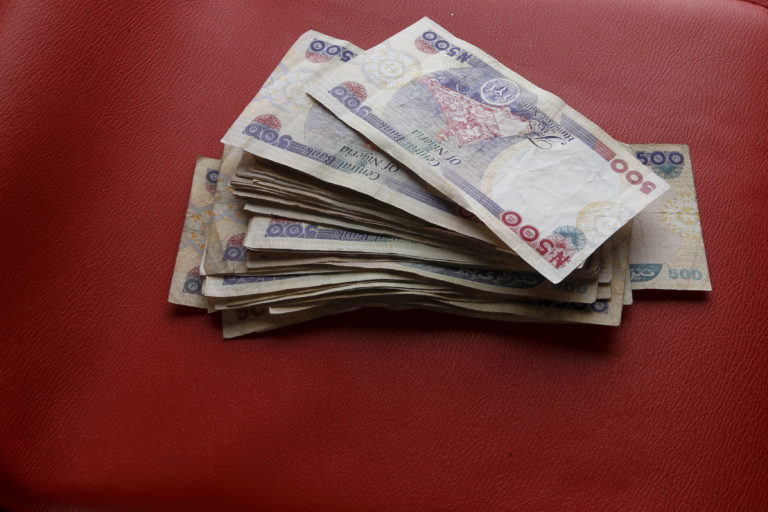
Background: Why the Currency Redesign
As a policy, project management, monitoring/evaluation and research person, I have been reflecting on the need and justification of the CBN proposed currency notes redesign project, as there are other pressing national issues the fund for such a project could solve and the mixed feelings experts and the general public have expressed on the project. According to the CBN Governor (in this report ), “as at the end of September 2022, available data at the CBN indicate that N2.73tn out of the N3.23tn currency in circulation was outside the vaults of commercial banks across the country, and supposedly held by members of the public.
Evidently, currency in circulation has more than doubled since 2015, rising from N1.46tn in December 2015 to N3.23tn as at September 2022.” This he said can not be allowed to continue, as these huge currency notes are also being held by terrorist and kidnapers through ransom payment.
Project Goal
It could be said that the assumption/theory of change of the currency redesign project is: if the target currency notes (N200, N500 & N1000) are changed, those hugely holding them outside of commercial bank will forcefully bring them back to the banks; which will lead to crowd liquidity mop up and control; while impacting positively on lending, interest rate and economy in general. As such, the goal of the policy/project according to the CBN Governor is: “To control currency in circulation as well as curb counterfeit currency and ransom payment to kidnappers and terrorists.”
Register for Tekedia Mini-MBA edition 19 (Feb 9 – May 2, 2026): big discounts for early bird.
Tekedia AI in Business Masterclass opens registrations.
Join Tekedia Capital Syndicate and co-invest in great global startups.
Register for Tekedia AI Lab: From Technical Design to Deployment (next edition begins Jan 24 2026).
Monitoring and Evaluation
As the key input, even though the amount of money (which will be very huge or even inflated in billions!) that will be spent on the currency notes redesign project has not been made public, it is good for the public to know how the outcome/impact of such public spending will be measured in line with the policy goal. As such, the outcome/impact or otherwise, could be measured based on the following indicators and risk assumptions.
1. Project (available) Baseline Indicators
Commercial banks liquidity, interest & lending rates baseline indicators
| SN | Percentage | |
| 1 | Liquidity rate | 20%, with N2.73 trillion (80%) out of the N3.23 trillion in circulation not in commercial banks. And 1month deposit rate of 5.58% as at August 2022
|
| 2 | Interest rate (monetary policy rate) | 14.00% at August 2022 |
| 3 | Maximum lending rate | 28.30% as at August 2022 |
(Data sources: The Punch report cited above & CBN data in this report https://www.cbn.gov.ng/rates/mnymktind.asp)
2. Project Outcome Indicators
Base on the above baseline indicators, the indicators of the outcome of the policy project implementation will be:
(1) Significant increase in deposit/liquidity rates;
(2) Significant reduction in interest rate;
(2) Significant increase in maximum lending rate.
Note: These outcome data will be sourced/corroborated from CBN, banks and relevant business associations like chambers of commerce, manufacturers association of Nigeria, etc as borrowers.
By implication, inline with the project goal, other outcome indicators should include:
(1) No of (increased) cases/prosecution of cash deposit money laundering offenders;
(2) Significant reduction in cases of kidnapping/ransom payment;
(3) Significant reduction in reported cases of currency notes counterfeiting.
Note: These outcome data will be sourced/corroborated from CBN, banks and Economic & Financial Crime Commission (EFCC).
3. Project Outcome Timeline
Since the crowd mop up (deposit) of the old currency notes has started this October 2022 and will end January 2023, it expected the above project outcome would occur between October 2022/January 2023.
4. Project Impact Indicators
As I projected in the project’s assumption/theory of change, it is expected that commercial banks liquidity will increase, which could lead to reduction in interest rate and increase in lending rate and borrowing by the public and businesses. As such, the project impact indicators will include:
(1) Emergence of new businesses;
(2) Expansion of existing businesses;
(3) Reduction of financial stress on members of the public.
Note: Data for impact a and b, will be collected/corroborated from chambers of commerce, business associations, market unions, corporate affairs commission, national bureau of statistics, etc. While data for impact c, will be collected from key informants.
5. Project Impact Timeline
The above project impact could start occurring by June 2023—which is at least six months after the end of the crowd mop up of deposits by January 2023.
6. Project Risk
Beyond the expected positive outcome/impact of the project, there could also be negative outcome/impact. For instance, to avoid being caught as money laundering offenders, those holding huge amounts of the old note may resort to changing them to dollars! If this happens, the price and scarcity of dollars will increase; which will affect those who need it for legitimate transactions. It will also affect the already nose-diving value of naira—stressing the economy further.
Secondly, if the redesign of the currency notes renders the money terrorists/kidnapers have useless, they could up their game to make money, bounce back and stay afloat. As such, this has security implications, accordingly. As they have been doing pertly, the terrorists/kidnapers may also completely start asking for ransom in foreign. This will therefore defeat the ransom payment prevention objective of the project.
Conclusion
In the spirit of value for money and amidst other pressing national issues that require funding—like flood victims support—the analysis I have presented here, will enable the public to evaluate the outcome/impact of the very huge fund that will be spent on the currency notes redesign project and the attendant public stress it will cause. With the evaluation at the end, it will clearly be for Nigerians to hail or nail the federal government and CBN Governor, as the case may be.



